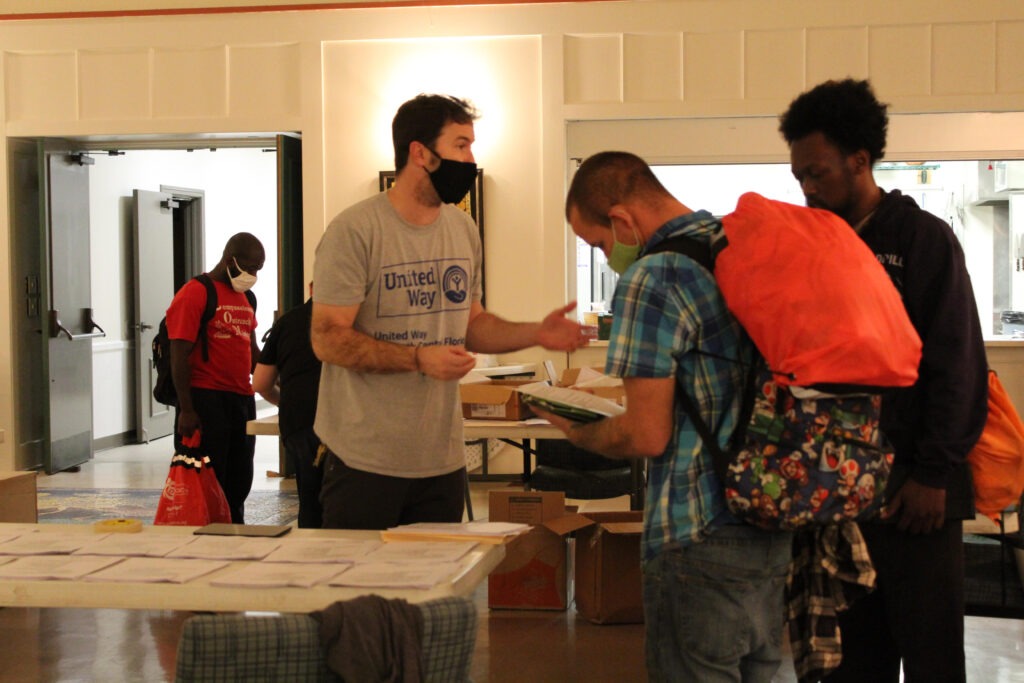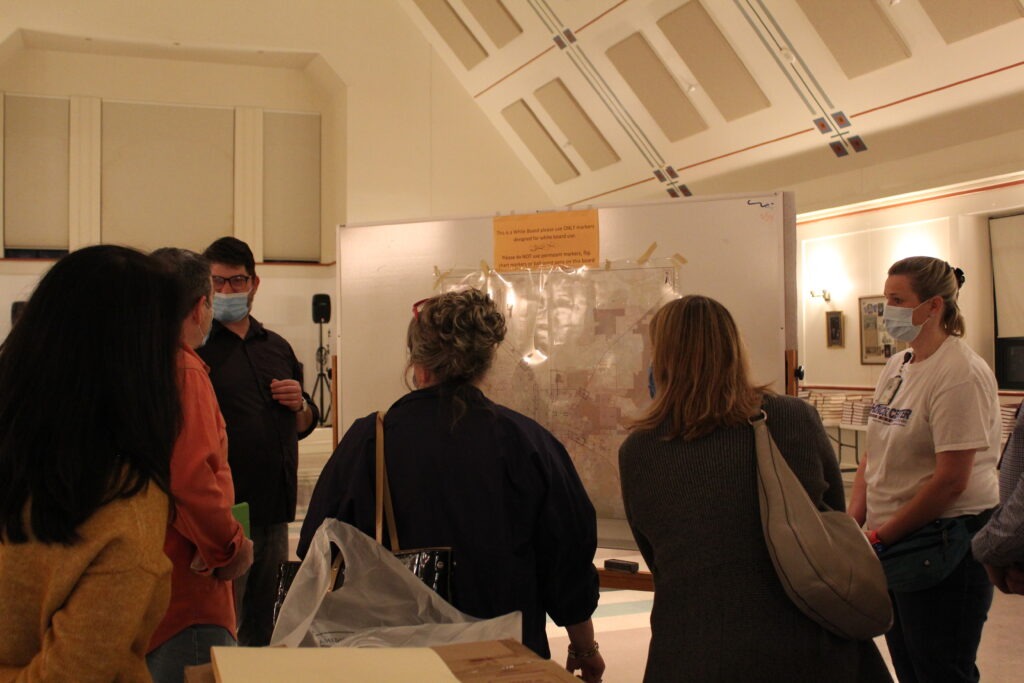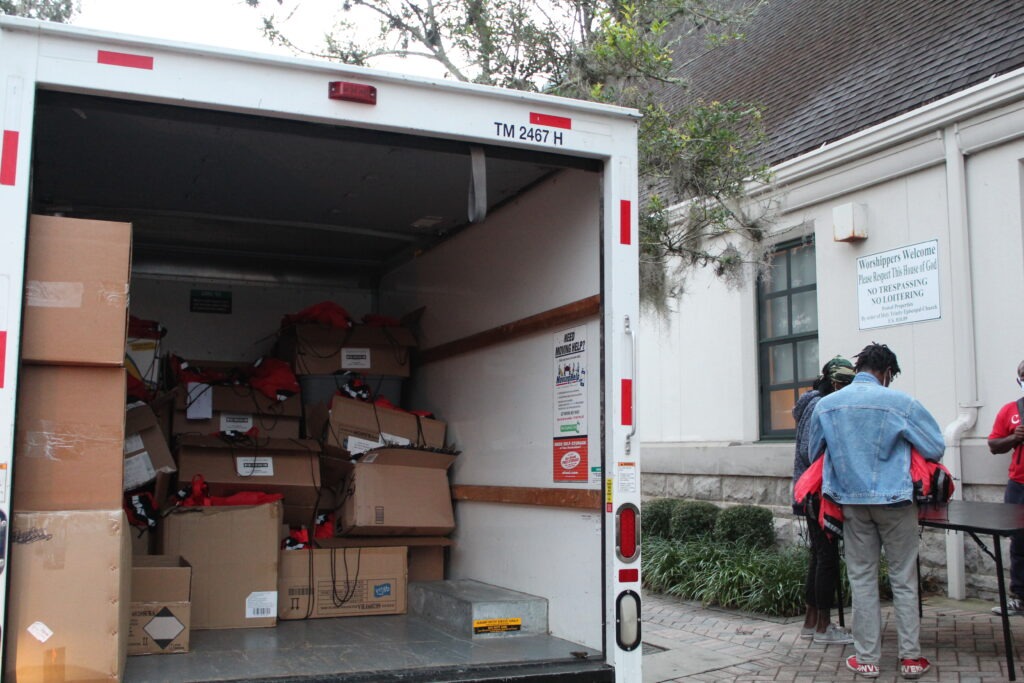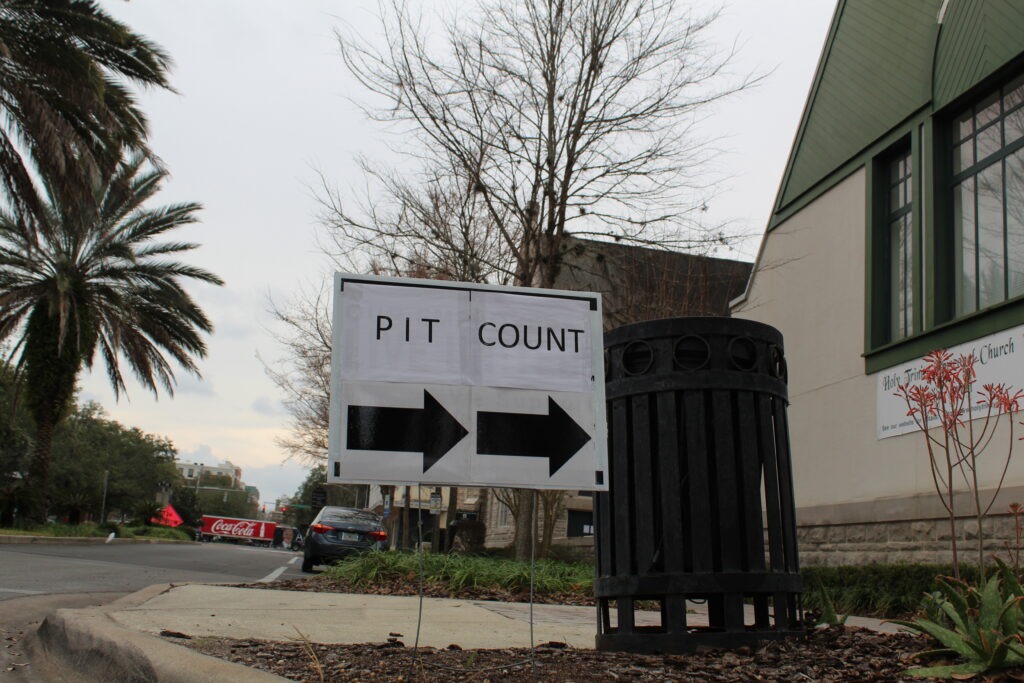At 6 a.m. on Tuesday, January 26, volunteers from the Built for Zero community of North Central Florida gathered to begin the annual point-in-time count, an aggregate, estimated census that is required by the U.S. Department of Housing and Urban Development every January.
North Central Florida uses the PIT Count data as just one marker of the scale of unsheltered and sheltered homelessness across their five counties. As a member of Built for Zero, the community collects real-time, person-specific data through a by-name list, which provides them with a comprehensive accounting of every person experiencing homelessness locally, regardless of sheltered or unsheltered status, updated at least monthly.
Improving outreach efforts
“I think it’s a credit to the intelligence of the providers in our community to identify how beneficial it is to work with people with lived experience.”
Patrick dodds
“We’re in the process of building out a really robust, comprehensive outreach program in our CoC [Continuum of Care], so this was a great jumping off point for us,” said Patrick Dodds, the Director for the Continuum of Care at United Way of North Central Florida. The community used information collected during the PIT count to create a detailed map showing where people experiencing unsheltered homelessness were concentrated, in order to better target ongoing outreach efforts.
This was also another opportunity for the Gainesville-area community to partner with people with lived experience, a commitment that spans their work.
“As a community, we are really trying to focus more on engaging people with lived experience into the planning, strategizing, and decision-making process,” said Dodds. “This just seemed like a logical step in that direction.”

Photo courtesy of Lillian Lawson, WUFT News
Tapping into a unique resource
The surveyors for the North Central Florida PIT Count typically come from three categories in the community — people with lived experience of homelessness, volunteers from other homeless services agencies, and volunteers from the community at large.
This year’s PIT Count had between 30 and 40 participants with lived experience, who worked anywhere from six to 12 hours each. All volunteers were paid in cash, at a rate of $12 an hour (up from $10 last year), and provided breakfast, lunch, and dinner, along with plenty of snacks, water, masks, and bus passes to more easily traverse the region.

Photo courtesy of Lillian Lawson, WUFT News
“Our continuum has always tapped into that resource and always solicited help from our unsheltered and formerly homeless community to assist during the point-in-time count,” said Dodds. “I think it’s a credit to the intelligence of the providers in our community to identify how beneficial it is to work with people with lived experience.”
Prior to the event itself, surveyors were offered a brief, paid, virtual or in-person training. Everyone was paired up, and each participant was also trained to give their partner the survey if they fell into one of the categories being counted — someone currently experiencing sheltered or unsheltered homelessness.
“You definitely learn to not be judgmental of anybody that might be without shelter. You really don’t know what their circumstances were to put them in the position in which they are today.”
Seth winnick
Seth Winnick, a native of Florida and certified automotive technician, participated in this year’s PIT Count as a surveyor with lived experience of homelessness, which he felt allowed him to connect with those he spoke to on a different level. “You definitely learn to not be judgmental of anybody that might be without shelter. You really don’t know what their circumstances were to put them in the position in which they are today,” he said.
Covid-19 protocols and supplies
Numerous precautions were taken to ensure the safety of all participants, which included a limited number of people at the survey headquarters, social distancing measures, an abundance of masks and hand sanitizer, along with a fully-digitized, shorter-than-average survey administered via tablet.
Surveyors were also equipped with “goodie bags” to distribute — backpacks filled with toiletries, masks, rain ponchos, socks, soap, and non-perishable food. The community packed 750 goodie bags total to cover their five counties, setting aside 400-500 for Alachua County, which has the largest concentration of people experiencing homelessness.

Photo courtesy of Lillian Lawson, WUFT News
Breeding trust and respect
The Built for Zero community has formed their PIT Count team this way for several years, recognizing the inherent value of employing people with lived experience in the effort. “They really understand and respect the personal boundaries that folks that are living in this situation have,” said Dodds.”They know how to approach it in a way that’s respectful and in a way that will breed trust.”
Throughout the day, Winnick shared his own lived experience of homelessness with those he spoke to those he surveyed. “I let them know that I’m pretty much in the same boat as you are,” he said. “I do have shelter, but I do consider myself homeless for intents and purposes. I don’t have an actual residence to call my own.”
Surveyors with lived experience of homelessness often know how to navigate the geography of the community, finding encampments and “hotspots” that may have been otherwise hidden, allowing the homeless services to later conduct more targeted outreach.
Giving back to the community
“The pandemic had created the need for this, but I can’t imagine us going back at this point. We were able to pay it about $3,700 back into the community,” Dodds explained, with the paid participants receiving an average of $120 each in cash for a day’s work. “I really enjoyed being able to work with the community and felt like it was such a great opportunity to actually give back to the community that we’re trying to help.”
Seth Winnick agrees, and if given the opportunity would “absolutely, without hesitation” participate in the event again.
“We’re pretty much all the same. One thing that I’ve come to realize is that today, more so than many years ago, there are many people who are maybe a paycheck or two away from being on the street,” he explained. “To me, it was an eye-opener. Because the next thing you know, here I am.”

“I really enjoyed being able to work with the community and felt like it was such a great opportunity to actually give back to the community that we’re trying to help.”
– Patrick Dodds


